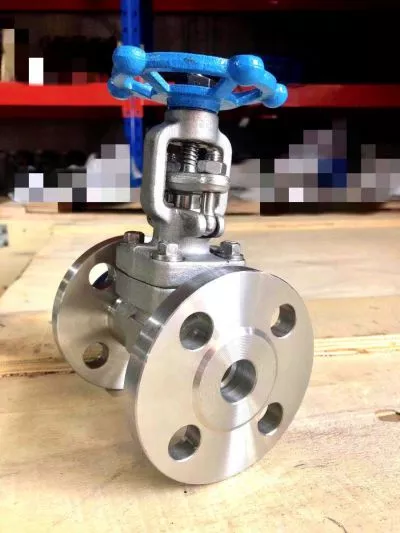The Sealing Principle of Forged Steel Valves
1. There is a gap on the sealing surface.
2. There is a pressure difference between the two sides of the sealing surface.
The forged valve sealing is also analyzed from four aspects, including the liquid sealing, gas sealing, leakage channel sealing principle and forged valve sealing surface.
Liquid Sealing
The sealability of a liquid is determined by its viscosity and surface tension. When the forged valve's leaky capillary is filled with gas, the surface tension can repel the liquid or introduce the liquid into the capillary.
So we have a tangent Angle. When the tangent Angle is less than 90 degree, the liquid will be injected into capillary, it will leak. The cause of leakage lies in the different properties of the medium. Experiment with different media, under the same condition, will get different results.
You can use water, air, kerosene, etc. The tangent Angle is more than 90 degree, and leakage will also occur, because of the oil or wax film on the metal surface.
Once the film on these surfaces is dissolved, the properties of the metal surface change and the previously rejected liquid will soak into the surface and leak out. In the view of the above situation, according to Poisson’s formula, the purpose of preventing or reducing leakage can be achieved under the condition of reducing capillary diameter and the medium viscosity.
Gas Sealing
According to Poisson's formula, the tightness of a gas is related to its molecules and viscosity. Leakage is inversely proportional to capillary length and gas viscosity, and directly proportional to capillary diameter and driving force.
When the diameter of the capillary is the same as the average freeness of the gas molecules, the gas molecules will flow into the capillary in the form of free thermal motion. Therefore, when we do the sealing test of forged valve, the medium must use water to play a role as sealing, and the air cannot be used as a kind of gas sealing.
Even if we reduce the capillary diameter below the size of the gas molecules through plastic deformation, we still cannot stop the flow of the gas .The reason is that gas can still diffuse through metal walls. So when we do a gas sealing test, we have to be more rigorous than when we do a liquid sealing test.
Leakage channel sealing principle
The forged valve seal is composed of two parts: the unevenness scattered on the waveform surface and the waviness of the distance between the wave peaks. In China, the elastic strain force of the most metal material is low, if you want to achieve the state of sealing, it is necessary to put forward higher requirements on the compression force of the metal material, that is, the compression force of the material should exceed its elasticity.
Therefore, in the forged valve design, sealing surface combined with a certain hardness difference to match, under the action of pressure, will produce a certain degree of plastic deformation sealing effect.
If the sealing surface is made of metal material, uneven protrusions will appear first, and the plastic deformation of these uneven protrusions can be caused by only a small load at the beginning. When the contact surface increases, a plastic-elastic deformation will occurs on the uneven surface. The roughness on both sides of the concave surface will be present.
These remaining diameters are required to be compacted along the continuum and in the annular direction when a load is applied that causes severe plastic deformation of the underlying material and makes the two surfaces in close contact.
Forged Valve Sealing Surface
The sealing surface of the forged valve is the part of the seat and shutoff that closes when the seat and shutoff are in contact. Metal sealing surface is easy to be damaged by clamping medium, medium corrosion, wear particles, cavitation erosion and erosion in the process of use, wear particles in particular.
If the wear particles are less uneven than the surface, the surface accuracy will be improved without deterioration when the sealing surface is worn together. On the contrary, it will make the surface accuracy worse. Therefore, when selecting wear particles, the factors such as material, working condition, lubrication and corrosion of sealing surface should be considered comprehensively.
For wear particles, when we choose seals, we must consider the comprehensive impact of various factors on its performance, in order to play the role of leakage prevention. Therefore, materials that resist corrosion, abrasion and erosion must be selected. Otherwise, the lack of any requirements will make its sealing performance greatly reduced.
